Larger Urban Zone
Eurostat, the European Union's statistical agency, has created the concept of Larger Urban Zone (LUZ) in an effort to harmonise definitions of urbanisation in the European Union and in countries outside the European Union.[1] These definitions were agreed between Eurostat and the National Statistics Offices of the different countries of the European Union at the European Commission's Urban Audit of 2004.[2]
In 2006 LUZ definitions were changed significantly improving the comparability of LUZ definitions across different countries. Several cities, such as Marseille, Lille and Nice, are excluded by definition from the list of LUZs on technical, definitional grounds, such as the coincidence of the metropolitan area with the urban zone.[3][4][5]
The latest round of the Urban Audit also added cities from candidate countries and EFTA countries.
Eurostat's urban definitions
The list below shows the population sizes of cities in the European Union as well as candidate countries and non-EU EFTA countries. The list is limited to those cities whose Larger Urban Zones (LUZ) have populations of at least 500,000. The LUZ represents an attempt at a harmonised definition of the metropolitan area. Eurostat's objective was to have an area from a significant share of the resident commute into the city, a concept known as the "functional urban region." To ensure a good data availability, Eurostat adjusts the LUZ boundaries to administrative boundaries that approximate the functional urban region.
Ranking methodology
The list below contains the cities in the European Union and associated countries that participated in the third round of the Urban Audit programme. The cities are ranked by the size of the population of the Larger Urban Zone. The figures in the Eurostat database are an attempt at a compromise between harmonised data for all of the European Union, and with availability of statistical data, making comparisons more accurate. The data used is from the 2006 Urban Audit III, which uses information collected for 2004.[6]
List of LUZs by population
Although the latest round of the Urban Audit also added cities from EFTA countries (Iceland, Liechtenstein, Norway and Switzerland) and EU candidate countries, the only candidate country for which there is available data is Turkey. (Marseille, Lille, Nice, Cordoba, Badajoz, Toulon and Montpellier should be added on the updated 2004 list: see the French Wiki page for the complete and updated 2004 list). The 2008 updated data from Urban Audit IV[7] has been partially published (still missing cities). The Urban Audit V with 2011 data was to be published from 2013 on,[8] but as of January 2014 "the results of the 2011 data collection are being collected."[9]
| Rank | City name | Country | LUZ population | LUZ area (km²) | Population Density (per km²) |
|---|---|---|---|---|---|
| 1 | London |
11,905,500 | 8,920[10] | 1,336 | |
| 2 | Paris |
11,532,409 | 12,079.87[10] | 918 | |
| 3 | Istanbul  | |
11,044,642 | 5,313 | 2,564 |
| 4 | Madrid_04.jpg) |
5,804,829 | 8,022 | 724 | |
| 5 | Ruhr |
5,302,179 | 4,435 | 1,196 | |
| 6 | Berlin |
4,971,331 | 17,385 | 286 | |
| 7 | Barcelona |
4,440,629 | 1,796.64 | 2,356 | |
| 8 | Athens |
4,013,368 | 3,806.92 | 1,054 | |
| 9 | Ankara |
3,708,047 | |||
| 10 | Rome |
3,457,690 | 3,666.66 | 943 | |
| 11 | Hamburg |
3,134,620 | 7,304 | 429 | |
| 12 | Milan |
3,076,643 | 1,348.32 | 2,282 | |
| 13 | Katowice |
2,710,397 | 2,650.65 | 1,023 | |
| 14 | Stuttgart |
2,663,660 | 3,654 | 729 | |
| 15 | Warsaw |
2,660,406 | 5,198.52 | 512 | |
| 16 | Munich |
2,531,706 | 5,504 | 460 | |
| 17 | Budapest |
2,524,697 | 2,538[10] | 943 | |
| 18 | Frankfurt |
2,517,561 | 4,305 | 585 | |
| 19 | Izmir |
2,440,902 | |||
| 20 | Lisbon |
2,435,837 | 1,432.49 | 1,700 | |
| 21 | Birmingham |
2,284,093 | 1,598 | 1,475 | |
| 22 | Naples |
2,253,964 | 564.95 | 3,990 | |
| 23 | Manchester |
2,240,230 | 1,280 | 1,984 | |
| 24 | Vienna |
2,179,769 | 4,610.93[10] | 473 | |
| 25 | Bucharest |
2,140,194 | 662 | 3,233 | |
| 26 | Prague |
1,964,750 | 6,977[10] | 282 | |
| 27 | Cologne |
1,873,580 | 1,626 | 1,152 | |
| 28 | Stockholm |
1,860,872 | 6,519 | 285 | |
| 29 | Copenhagen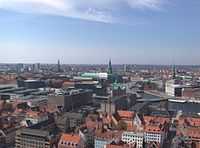 |
1,806,667[10] | 2,759[10] | 655 | |
| 30 | Brussels |
1,800,663 | 1,613.91 | 1,116 | |
| 31 | Glasgow |
1,747,100 | 3,346 | 522 | |
| 32 | Turin |
1,745,221 | 1,878.97 | 929 | |
| 33 | Lyon |
1,717,300 | 5,997.68[10] | 286 | |
| 34 | Valencia |
1,564,145 | 1,440.58 | 1,086 | |
| 35 | Dublin |
1,535,446[10] | 114.99 | 4,588 | |
| 36 | Düsseldorf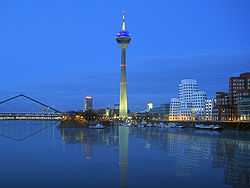 |
1,525,029 | 1,201 | 1,270 | |
| 37 | Leeds |
1,499,465 | 5,114[10] | 468 | |
| 38 | Bursa |
1,458,067 | |||
| 39 | Amsterdam |
1,443,258 | 859.28 | 1,680 | |
| 40 | Adana |
1,384,680 | |||
| 41 | Liverpool |
1,365,900 | 821 | 1,664 | |
| 42 | Bielefeld |
1,297,876 | 2,921 | 444 | |
| 43 | Hanover |
1,294,447 | 2,966 | 436 | |
| 44 | Nuremberg |
1,288,797 | 2,934 | 439 | |
| 45 | Sheffield |
1,277,100 | 1,846 | 692 | |
| 46 | Kraków |
1,264,322 | 2,988.65 | 423 | |
| 47 | Sofia |
1,263,807[10] | 3,424.2[10] | 369 | |
| 48 | Seville |
1,249,346 | 3,081.9 | 405 | |
| 49 | Bremen |
1,249,291 | 5,885 | 213 | |
| 50 | Helsinki |
1,224,107 | 2,969.94 | 412 | |
| 51 | Rotterdam |
1,186,818 | 611.75 | 1,940 | |
| 52 | Łódź |
1,163,516 | 2,857.51 | 407 | |
| 53 | Ostrava |
1,153,876 | 3,896[10] | 296 | |
| 54 | Zagreb |
1,110,517 | 3,719 | 299 | |
| 55 | Zürich |
1,110,478 | 1,086.14 | 1,022 | |
| 56 | Gdańsk |
1,105,203 | 3,457.32 | 320 | |
| 57 | Porto |
1,099,040 | 562.32 | 1,954 | |
| 58 | Oslo |
1,090,513 | 6,920 | 158 | |
| 59 | Tyne and Wear |
1,055,600 | 3,385 | 312 | |
| 60 | Toulouse |
1,052,497 | 4,706.93[10] | 224 | |
| 61 | Gaziantep.jpg) ! ! |
1,042,732 | |||
| 62 | Wrocław |
1,031,439 | 4,582.2 | 225 | |
| 63 | Poznań |
1,018,511 | 3,719.2 | 274 | |
| 64 | Bristol.JPG) |
1,006,600 | 1,635 | 616 | |
| 65 | Riga |
1,003,949 | 5,382.5 | 187 | |
| 66 | Thessaloniki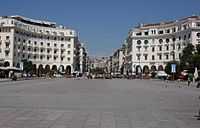 |
995,766 | 1,455.62 | ||
| 67 | Bordeaux |
981,370 | |||
| 67 | The Hague |
978,161 | |||
| 69 | Bilbao.jpg) |
939,994 | |||
| 70 | Konya |
919,433 | |||
| 71 | Antwerp |
915,258 | |||
| 72 | Bonn |
908,503 | |||
| 73 | Leipzig |
904,401 | |||
| 74 | Dresden |
902,067 | |||
| 75 | Göteborg |
873,335 | |||
| 76 | Saarbrücken |
855,317 | |||
| 77 | Palermo |
855,285 | |||
| 78 | Vilnius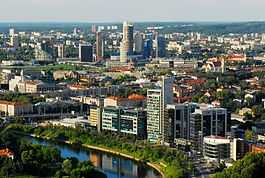 |
850,300 | |||
| 79 | Cardiff |
841,600 | |||
| 80 | Nottingham |
825,600 | 4,073 | 202 | |
| 81 | Diyarbakir |
814,874 | |||
| 82 | Antalya |
814,685 | |||
| 83 | Genoa |
800,709[11] | |||
| 84 | Edinburgh |
787,700 | |||
| 85 | Szczecin |
777,806 | |||
| 86 | Leicester |
772,400 | |||
| 87 | Nantes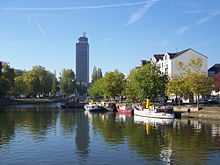 |
751,085 | |||
| 88 | Bologna |
743,965 | |||
| 89 | Brno |
728,101 | |||
| 90 | Karlsruhe |
712,475 | |||
| 91 | Málaga |
699,916 | |||
| 92 | Florence |
696,767 | |||
| 93 | Zaragoza |
685,873 | |||
| 94 | Kayseri |
675,734 | |||
| 95 | Aarhus |
663,472 | 5,400 | 123 | |
| 96 | Lublin |
652,642 | 2,883 | 226 | |
| 97 | Coventry |
651,000 | |||
| 98 | Kiel ! ! |
641,905 | |||
| 99 | Belfast |
641,638 | |||
| 100 | Strasbourg |
634,275 | |||
| 101 | Augsburg |
629,139 | |||
| 102 | Liège |
626,357 | |||
| 103 | Las Palmas de Gran Canaria |
625,892 | |||
| 104 | Bari |
623,298 | |||
| 105 | Freiburg im Breisgau |
618,467 | |||
| 106 | Venice |
612,245 | |||
| 107 | Padua |
605,709 | |||
| 108 | Izmit |
601,351 | |||
| 109 | Bratislava |
601,132 | |||
| 110 | Palma |
593,386 | |||
| 111 | Magdeburg |
588,875 | |||
| 112 | Bydgoszcz |
582,927 | |||
| 113 | Kingston upon Hull |
573,300 | |||
| 114 | Catania |
572,302 | |||
| 115 | Utrecht |
564,485 | |||
| 116 | Verona |
563,952 | |||
| 117 | Rennes |
553,579 | |||
| 118 | Malmö |
550,289 | |||
| 119 | Vigo |
548,799 | |||
| 120 | Erfurt |
543,226 | |||
| 121 | Grenoble |
541,888 | |||
| 122 | Linz |
532,995 | |||
| 123 | Białystok.jpg) |
523,958 | |||
| 124 | Tallinn |
521,410 | |||
| 125 | Rouen |
519,318 | |||
| 126 | Santa Cruz |
507,306 | |||
| 127 | Malatya | 501,849 |
Urban Audit
Eurostat's Urban Audit is about much more than demographics. In order for it to be useful as a policy tool to the European Commission and other authorities it contains data for over 250 indicators across the following domains:[12][13]
- Demography
- Social Aspects
- Economic Aspects
- Civic Involvement
- Training and Education
- Environment
- Travel and Transport
- Information Society
- Culture and Recreation
See also
- Largest cities of the European Union by population within city limits
- Largest urban areas of the European Union
- List of metropolitan areas in Europe by population
- Largest metropolitan areas in the Nordic countries
- List of metropolitan areas in Sweden
- World's largest cities
References
- ↑ ""City statistics - Urban audit"". Eurostat. 2006.
- ↑ "The shift of Eurostat to Urban Statistics". Dr. Berthold Feldmann, Eurostat. March 2006.
- ↑ http://www.statistiques-locales.insee.fr/Fiches/RS/AU1999/RS_AU1999003.pdf
- ↑ http://www.statistiques-locales.insee.fr/Fiches/RS/AU1999/RS_AU1999004.pdf
- ↑ http://www.statistiques-locales.insee.fr/Fiches/RS/AU1999/RS_AU1999006.pdf
- ↑ "Urban Audit Database". Urbanaudit.org. Retrieved 2011-04-29.
- ↑ http://www.ons.gov.uk/ons/guide-method/user-guidance/urban-audit/urban-audit-iv/index.html
- ↑ http://www.ons.gov.uk/ons/guide-method/user-guidance/urban-audit/urban-audit-v/index.html
- ↑ http://epp.eurostat.ec.europa.eu/portal/page/portal/region_cities/city_urban/urban_audit_data_collections
- ↑ 10.0 10.1 10.2 10.3 10.4 10.5 10.6 10.7 10.8 10.9 10.10 10.11 10.12 10.13 Data for 2001 (2004 data not yet available)
- ↑ https://docs.google.com/viewer?a=v&q=cache:__3eQhm77NgJ:www.cityrailways.it/storage/pdf/01_urbanismi%2520ITALIA_2011.pdf+area+metropolitana+genova+cityrailways&hl=it&gl=it&pid=bl&srcid=ADGEESjDMzGUJ7IgpYS5yCMwBhH8_xo7WTNApyU_qcdOttBLmAb_haOeR5wIBY5bmEplh-98jpCUga8D4fl71Qjvxr2hbYQHraBRbro663gnH3C8dzHmOjs1efjT1ZLHrWprsW63AgXU&sig=AHIEtbR1sNS5BPKqqKmb0T76lxtRD0Mk8g
- ↑ "Urban Audit". European Commission. 2006.
- ↑ "State of European Cities Report" (PDF). Retrieved 2011-04-29.
External links
- GMES Urban Atlas: PDF files, ZIP files
- Eurostat: European cities
- Eurostat: Total population in Urban Audit cities, Larger Urban Zone
| |||||||||||||||||||||||||||||||||||||||||||||||||||||||